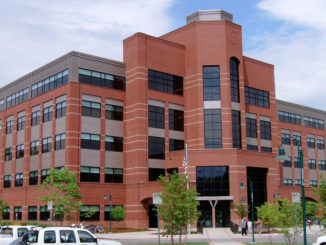
Support Northern Colorado Journalism
Show your support for North Forty News by helping us produce more content. It's a kind and simple gesture that will help us continue to bring more content to you.
BONUS - Donors get a link in their receipt to sign up for our once-per-week instant text messaging alert. Get your e-copy of North Forty News the moment it is released!
Click to Donate
Here’s a riddle for you. What kills more people than car accidents or firearm deaths each year and is one of the leading and growing health epidemics in our nation? The answer is opioids.
Drug overdose is now the leading cause of accidental death in the U.S. with over 50,000 lethal drug overdoses each year. Opioids are driving this epidemic with over 20,000 deaths due to prescription pain relievers and 13,000 deaths due to heroin. The epidemic is growing so rapidly that it has caused a drop in the life expectancy for the past two years, something not seen in our country since 1962. In Colorado, last year saw the highest number of deaths, with over 500 from opioids and heroin. It was only half that two years ago. We rank second worse among the states for prescription drug misuse with over 255,000 Coloradans misusing prescription drugs. Don’t think it isn’t affecting our community.
The major cause of the crisis is the growing misuse of prescription pain killers. Overdose deaths exactly parallel the growth of pain killer prescriptions, increasing four-fold from 2000-2011. In 2012, 259 million prescriptions were written for pain killers, more than one for every American. During this time many pharmaceutical companies hid the addictive properties of opioids from prescribing physicians. Eighty percent of heroin users reported starting on pain killers.
Opioids are derived from the opium poppy and include morphine, heroin, tramadol, oxycodone and methadone. After about a month of abuse, there is no “high” and users take more and more to just feel normal. Overdose causes respiratory depression and can be recognized by pinpoint pupils, unconsciousness, and slowed breathing and ultimately death.
So what’s being done to curb the opioid epidemic in Colorado? There isn’t one easy answer, but a number of proven approaches are a part of the Colorado Plan to Reduce Prescription Drug Abuse.
Prevention efforts include a public awareness campaign, a Prescription Drug Monitoring Program to detect over-prescribing and set limits on prescriptions, education for prescribing physicians, proper disposal of unused medications, and youth education and school-based resources.
Treatment involves increasing the availability of medically assisted treatment (MAT) using methadone to reduce opioid use, dependence and overdose. MAT is the most effective treatment with over 60 percent maintaining recovery. The Colorado Department of Human Services provides 21 Opioid Treatment Programs supported by federal dollars. Also in Colorado including Larimer County, over 7,000 naloxone (also known as Narcan) kits which can reverse the effects of opioids and prevent overdose deaths in emergency situations have been distributed and over 350 overdose reversals have been documented so far.
This serious crisis in our state will only be addressed by continued collaboration between state and local governments with physicians, opioid treatment programs, substance abuse treatment providers, hospitals, law enforcement, jails, universities and an informed public. For more information type in “opioid” at www.larimer.org. If you or someone you know is suffering from addiction you can get the help you need from the Larimer County Health Department or your physician. It could save a life.
Larimer County Commissioner Steve Johnson is one of three commissioners. He resides in District 2 and represents all of Larimer County.



